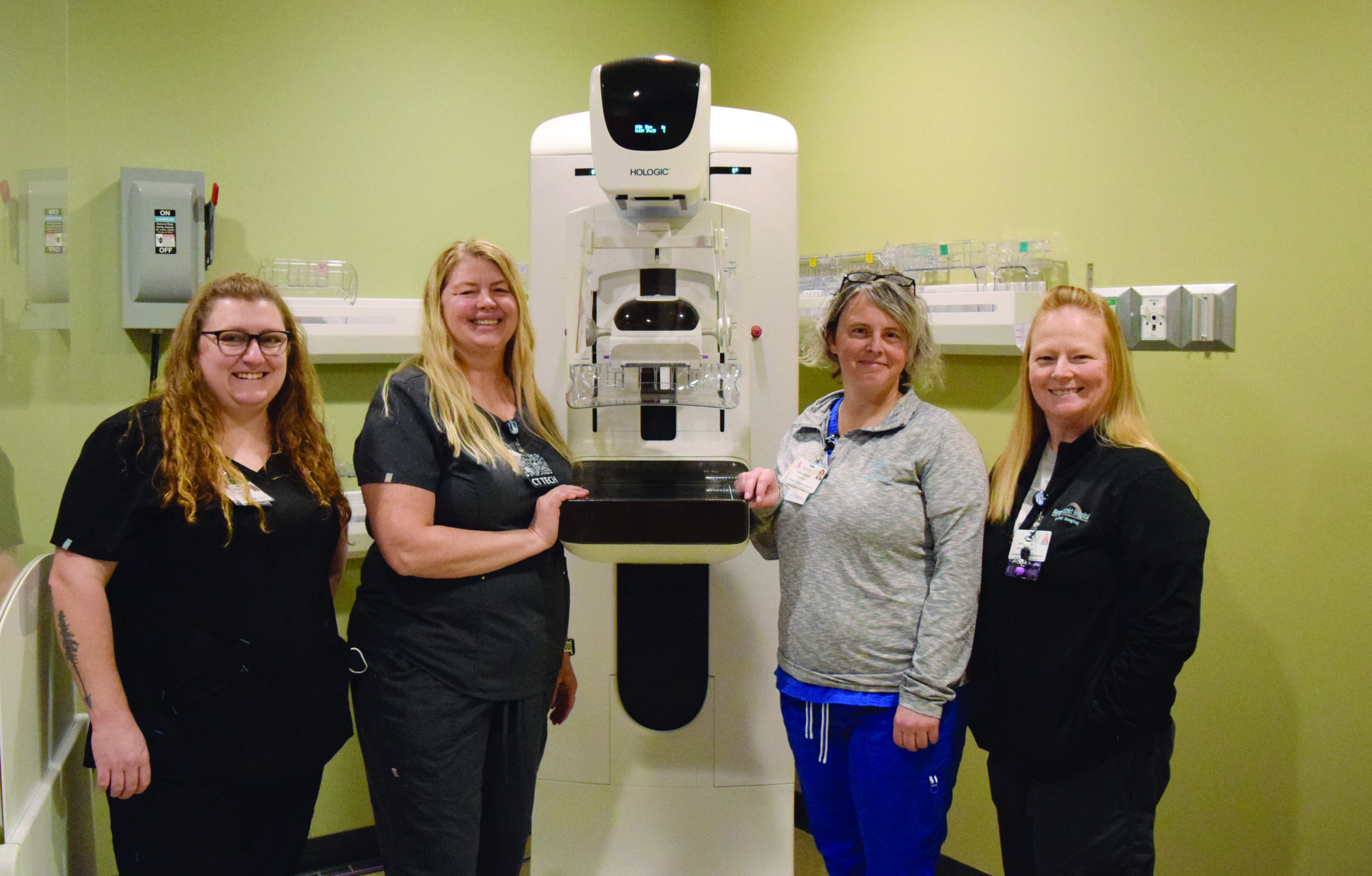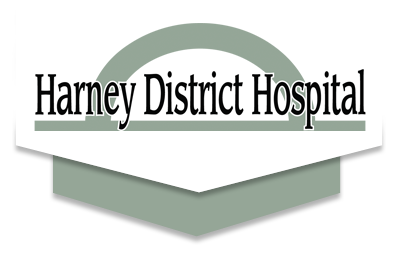
01 Mar Hospital now offering 3D mammograms
Harney District Hospital’s new 3D tomography mammography machine offers state-of-the-art breast imaging here in Harney County. From L-R: Sierra Gibbs, Georgia Karel, Karen Forster, and Jody Megan of the Harney District Hospital Imaging Department pose with the new machine.
Harney District Hospital is excited to announce that its new 3D tomography mammography machine is up and running.
This state-of-the-art technology provides images of breast tissue in layers, making it easier to find abnormalities and maintaining the gold standard in breast imaging.
The hospital was able to finalize the purchase of the $288,688 machine, following two years of fundraising by the Harney Hospital Foundation.
The Foundation hosted a variety of fundraisers to help garner funds for the new machine — including employee campaigns, small raffle fundraisers, and the Skull 120 After Party. These funds were combined with financial incentives that the hospital earned for meeting its metrics. The combined funds were used to secure matching funds for grant applications. The Foundation is the proud recipient of a $50,000 grant from the Ford Family Foundation and a $75,000 grant from the Roundhouse Foundation.
The final push for funding came in November 2022 when the Foundation hosted its “Glitz + Glam” Gala. Offering delicious dinner, decadent desserts, jaw-dropping décor, exciting auctions, and the toe-tapping tunes of Rock Dee House dueling pianos, the formal affair exceeded the Foundation’s fundraising goals, grossing $16,000. The gala’s live and paddle auctions alone raised $13,540 in a matter of minutes!
•••
What are mammograms?
According to the American Cancer Society, mammograms can be used as a screening test in women without symptoms (screening mammogram) or in women who have symptoms that might be from cancer (diagnostic mammogram). A mammogram can often find or detect breast cancer early (when it’s small) and even before a lump can be felt.
Early detection is one of the most important strategies for preventing deaths from breast cancer. Breast cancer that’s found early, when it’s small and has not spread, is easier to treat successfully. Getting regular screening tests is the most reliable way to find breast cancer early.
Mammograms can often show abnormal areas in the breast. Although a mammogram can’t determine for sure whether an abnormal area is cancer, these screenings can help healthcare providers decide whether additional testing (such as a breast biopsy) is needed.
How do they work?
Mammography machines are designed to examine breast tissue by taking low-dose x-rays. Each machine includes two plates that compress or flatten the breast to spread the tissue apart. This provides a better quality image and allows less radiation to be used.
Like standard (2D) mammograms, three-dimensional (3D) mammograms compress each breast from two different angles — once from top-to-bottom and once from side-to-side — while x-rays are taken. However, 3D mammograms also take many low-dose x-rays as they move in a small arc around the breast. A computer then puts the images together into a series of thin slices. This allows healthcare providers to see the breast tissues more clearly in three dimensions.
Many studies have shown that 3D mammography appears to lower the chance of being called back for follow-up testing after screening. Three-dimensional mammography also appears to find more breast cancers and can be helpful for women with dense breasts. A large study is now underway to better compare outcomes between 3D and standard (2D) mammograms.
Should you get a mammogram?
The American Cancer Society has screening guidelines for women at average and high risk of breast cancer. For screening purposes, a woman is considered to be at average risk if she doesn’t have a personal history of breast cancer, a strong family history of breast cancer, or a genetic mutation known to increase risk of breast cancer (such as a BRCA gene), and has not had chest radiation therapy before the age of 30.
Women at average risk of breast cancer can start getting annual mammograms between the ages of 40 and 44. The American Cancer Society recommends annual screenings for women ages 45-54 who are at average risk of breast cancer. Women who are 55 and older can switch to a mammogram every-other-year, or they can choose to continue yearly mammograms. Screening should continue as long as a woman is in good health and expected to live at least 10 more years.
Women who are at high risk for breast cancer, based on certain factors, should get a breast MRI and a mammogram every year, typically starting at age 30.
Several risk-assessment tools can help healthcare professionals estimate a woman’s breast cancer risk. These tools give rough estimates of breast cancer risk, based on different combinations of risk factors and data sets. Women should discuss the use of any risk-assessment tools, and their results, with their healthcare provider.
Scheduling a mammogram at Harney District Hospital
Anyone who would like to schedule a screening mammogram can call 541-573-8359 to make an appointment. Mammograms are typically offered Monday through Friday from 9 a.m. to 4 p.m. Special accommodations can be made for later appointments, upon request.
We strongly encourage you to see your primary care provider as soon as possible if you are experiencing symptoms that might be from breast cancer. Your provider may need to order a diagnostic mammogram for you.
Learn more
You can learn more about mammograms and breast cancer prevention by visiting the American Cancer Society’s website at cancer.org.

No Comments